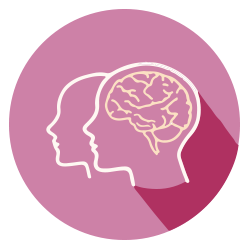A box of chocolates weighs 500 grams. The hotel is only a 400 meter walk away from the center. The mansion is over 6,000-square-foot big. From weight to size or distance; customers are constantly exposed to quantitative information in their decision making.
However, as it turns out, our brain is awful at processing this quantitative information. We prefer information to be more discrete and sparking the imagination, say a box of 10 chocolates, a hotel that’s only a 5-minute walk away from the center, or a mansion of 10 bedrooms…
This finding applies to other quantitative information as well and has intriguing implications for nudging consumer behavior both for marketeers as well as public policy makers.
Posted in Archive, Strategy
published on Wednesday, 04 September 2019
By letting customers build their own products, IKEA is able to sell their furniture for low prices since construction is one of the most costly aspects of furniture. Additionally, their customers have a higher liking for the IKEA products, because they have to build it themselves. This sounds contra-intuitive: We like it when others cook for us or clean for us, so why would we prefer to construct a table ourselves?
Posted in Archive, Strategy
published on Wednesday, 14 August 2019
What is your budget? What is your bid? How much would you like to donate?
These questions have become quite commonplace online; customers are asked to choose what they would like to pay, rather than are provided with a pre-set value. For instance, eBay allows customers to bid on listed items, whereas charity website Doctors Without Borders allows donors to enter a chosen donation amount.
Customers are prompted to indicate their chosen value either via an open-ended text box or a slider scale. With the recent boost in popularity of online transactions via mobile phones, organizations have increasingly turned to the use of slider scales rather than text boxes to register monetary values.
But how has this switch to sliders affected customers’ payments? Do payment responses differ for text boxes and slider scales? As it turns out; yes, they certainly do!
Posted in Archive, Conversion
published on Wednesday, 07 August 2019
Deciding whether or not to put a product in your shopping basket is often a split-second decision. If there’s one advantage neuromarketing has over traditional methods, it’s being able to measure objectively what happens during that split second.
One problem: the amount of research methods under the ‘neuromarketing’ umbrella grows ever more diverse. From skin conductance to EEG. From Facial Coding to Eye Tracking.
When deciding for a specific method, a marketer wants to know one single thing: how well does it predict actual purchase?
Posted in Research, Archive
published on Thursday, 25 July 2019
Marketing and psychology are thick as thieves: by increasing their knowledge on psychology, marketeers are able to gain a deeper understanding in the behavior of their customers. However, keeping your knowledge up to date may be problematic in this quickly expanding field. In the past, people read books, scientific journals or attended conventions.
Posted in Research, Archive
published on Friday, 19 July 2019





